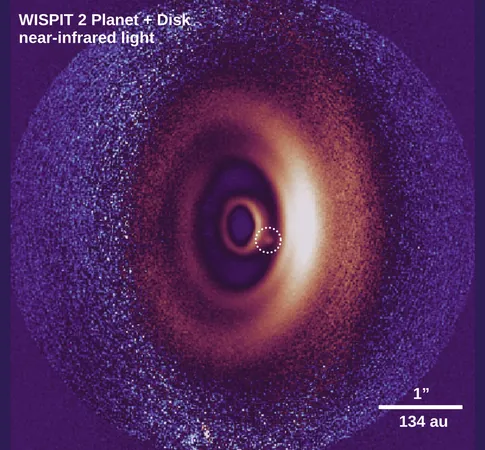
Are Red Jumping Spiders Leading the Charge to Hybrid Extinction?
2025-08-25
Author: Jacques
A Colorful Crisis in the Spider World!
Researchers from the University of California Berkeley have unveiled a fascinating yet alarming trend among jumping spiders: female spiders are increasingly favoring red males from a species called Habronattus americanus. This color preference is triggering interspecies mating, potentially leading one species down the path of hybridized extinction.
Hybridization: A Double-Edged Sword
Hybridization is a crucial factor in speciation that can enhance or undermine species divergence. Typically, mate choice serves as a significant barrier between closely related species. However, in the captivating world of Habronattus, ongoing interactions and mating between different species suggest a more complex relationship.
The Red Obsession
The study, featured in the Proceedings of the Royal Society B, explores the 'sea of red' hypothesis. This concept suggests that the preference for red-ornamented males will eventually prevail in areas inhabited by various Habronattus species.
The Scientific Experiment
In the research, scientists assessed female mate preferences in two recently diverged species: Habronattus sansoni, characterized by brown and black coloring, and Habronattus americanus, known for its striking red traits. Observations of male courtship behavior were carefully recorded to evaluate mating success.
Stunning Results!
Females showed a striking preference for red males, with Habronattus americanus females mating 73% of the time with red males, while Habronattus sansoni females mated 74% with americanus. When sansoni males were painted red, their mating success soared to 45% compared to just 11% when they were painted brown.
Nature's Color Code Uncovered
These findings align with geographical data from iNaturalist, showing that red is the dominant color across various Habronattus populations, with non-red individuals existing only in isolated regions.
The Future of These Jumping Spiders
The researchers conclude that the strong preference for red males by females could lead to genetic homogenization and influence biodiversity profoundly. This suggests a dire future for species that fail to adapt to changing mate preferences.
Implications for Evolution and Extinction
The study starkly illustrates how the whims of female choice can manipulate genetic landscapes, possibly leading to extinction through hybridization. This highlights the intricate balance between mating interactions and biodiversity, shedding light on the significant role these fascinating arachnids play in the ecosystem.









 Brasil (PT)
Brasil (PT)
 Canada (EN)
Canada (EN)
 Chile (ES)
Chile (ES)
 Česko (CS)
Česko (CS)
 대한민국 (KO)
대한민국 (KO)
 España (ES)
España (ES)
 France (FR)
France (FR)
 Hong Kong (EN)
Hong Kong (EN)
 Italia (IT)
Italia (IT)
 日本 (JA)
日本 (JA)
 Magyarország (HU)
Magyarország (HU)
 Norge (NO)
Norge (NO)
 Polska (PL)
Polska (PL)
 Schweiz (DE)
Schweiz (DE)
 Singapore (EN)
Singapore (EN)
 Sverige (SV)
Sverige (SV)
 Suomi (FI)
Suomi (FI)
 Türkiye (TR)
Türkiye (TR)
 الإمارات العربية المتحدة (AR)
الإمارات العربية المتحدة (AR)